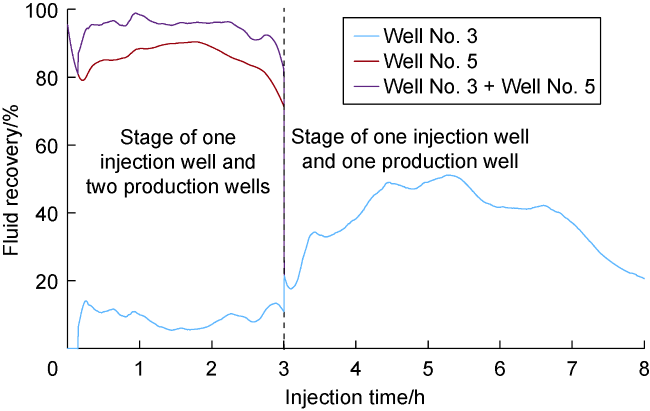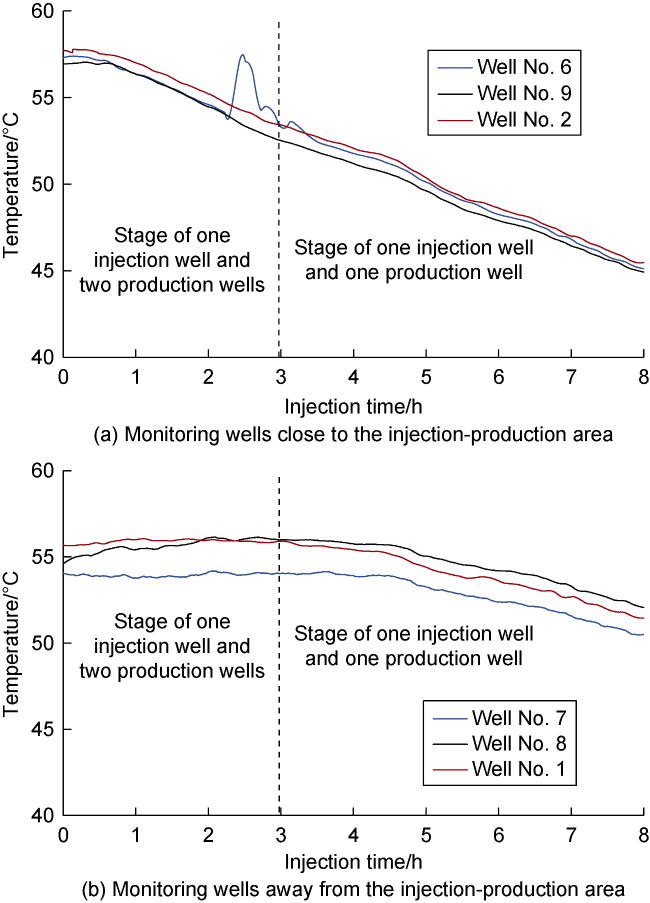To investigate the fluid flow and heat transfer process within fractures, some researchers have carried out single-fracture experiments by using split small cylindrical rock samples. Some meaningful conclusions were obtained
[20⇓⇓-23]. Bai et al.
[24] proposed that the heat transfer coefficient showed a positive correlation with the flow velocity, but decreased with the increase of fracture width. Shu et al.
[25-26] analyzed the variation laws of fracture permeability and heat extraction performance due to changes in temperature and confining pressure. However, the heat extraction process in HDR fracture systems is extremely complex. During long-term injection and production, the fracture network undergoes dynamic evolution. As dominant flow channels emerge between injection and production wells, a "thermal short-circuit effect" can occur in the fracture network, reducing the effective heat exchange area and significantly reducing heat extraction efficiency. For example, the early thermal breakthrough in the Hijiori project of Japan resulted in the formation of dominant channels, causing the wellbore temperature to drop from 163 °C to below 100 °C
[27]. Moreover, the development of natural fractures in the HDR and the loss of heat exchange fluid were significant factors in the low heat extraction efficiency of HDRs
[28]. In the later stages of the Rosemanowes project of UK and the Ogachi project of Japan, the loss of heat exchange fluid exceeded 70%
[29⇓-31]. Due to the small scale and the simple fracture channel, single fracture fluid flow and heat transfer experiments cannot adequately capture the complex injection and production processes of HDRs. Thus, it is necessary to conduct large-scale physical simulation experiments of injection and production of HDRs. Song et al.
[32] used artificial rock samples to evaluate the injection-production performance of multi-branch geothermal wells. They discussed the effects of different parameters on the injection-production capacity of branch wells, and compared the injection-production effects of multi-branch well systems with single-well systems. Hu et al.
[33] created artificial fractures in rock samples by fracturing and then conducted experiments with one injection well and multiple production wells. Their research results showed that the effective fracture area, rather than the total fracture area, determined the heat extraction performance of HDRs; additionally, by gradually increasing the injection rate, the excessive fracture propagation and high injection pressure could be avoided. Although these experimental researches reflect the heat extraction process to some extent, the influence of the dominant channels and the fluid leakoff on the injection-production performance has not been discussed. In conclusion, there is a scarcity of the large-scale injection-production physical simulation experimental studies for HDRs, and to date, no reports have been found on injection-production experiments within the natural fracture systems of HDR's.









